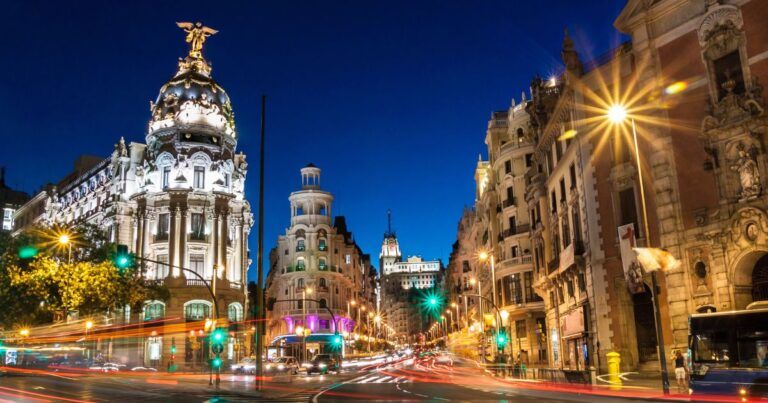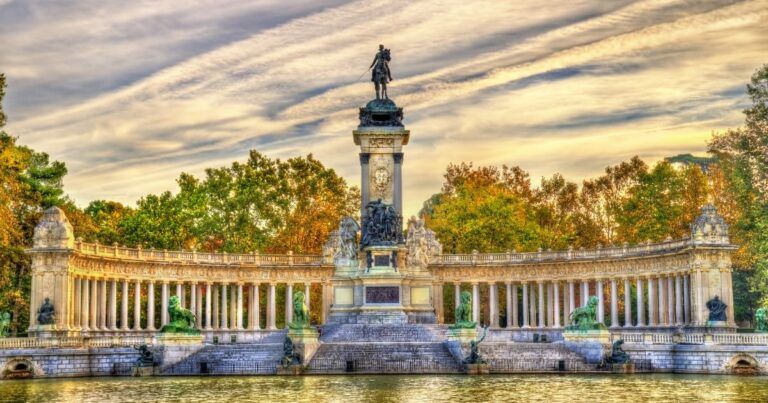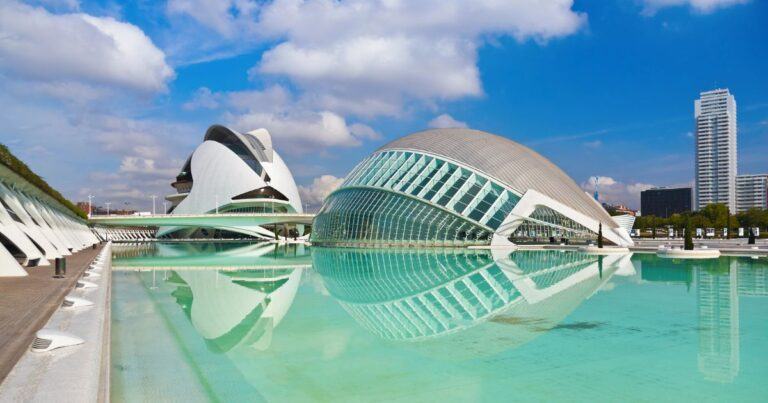Top Things To Do In Seville
If you’re planning a trip to southern Spain, Seville should be high on your list. It’s a city of Moorish palaces, orange-scented courtyards, flamenco rhythms, and impossibly beautiful plazas. But with so much to see, where do you start?
This guide breaks down the top things to do in Seville – not just the famous spots, but also local favorites and quirky corners that make this city unforgettable.
Top Things To Do In Seville at a Glance
- Explore the stunning Real Alcázar and its lush gardens
- Climb La Giralda for sweeping city views
- Stroll the picturesque Barrio Santa Cruz
- Watch an authentic flamenco performance in Triana
- Wander Plaza de España and María Luisa Park
- Snap photos under the modern Metropol Parasol
- Sip a glass of wine at El Rinconcillo, Seville’s oldest bar
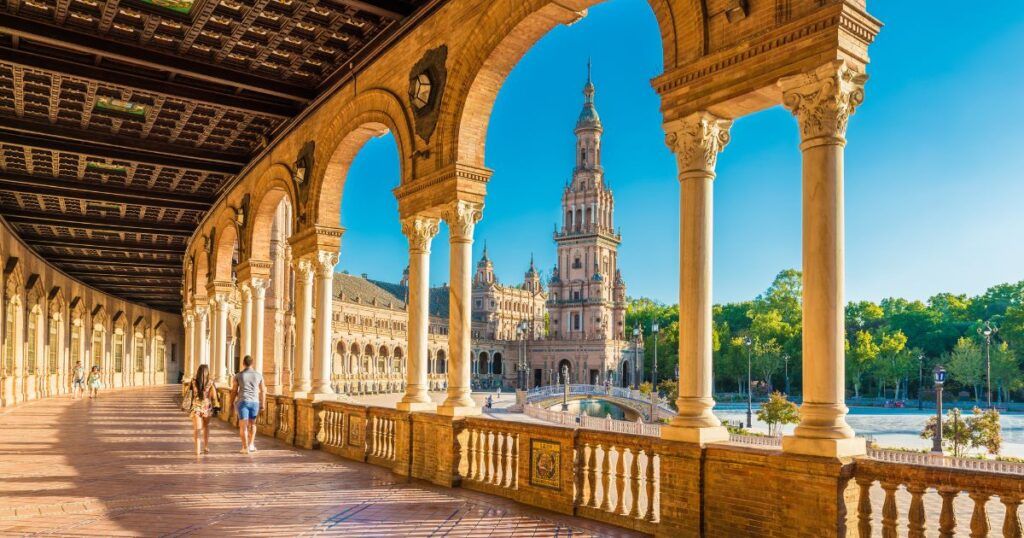
Don’t Miss the Ultimate Spain Travel Guide
Top Things To Do In Seville
Historic Attractions
Seville Cathedral & La Giralda
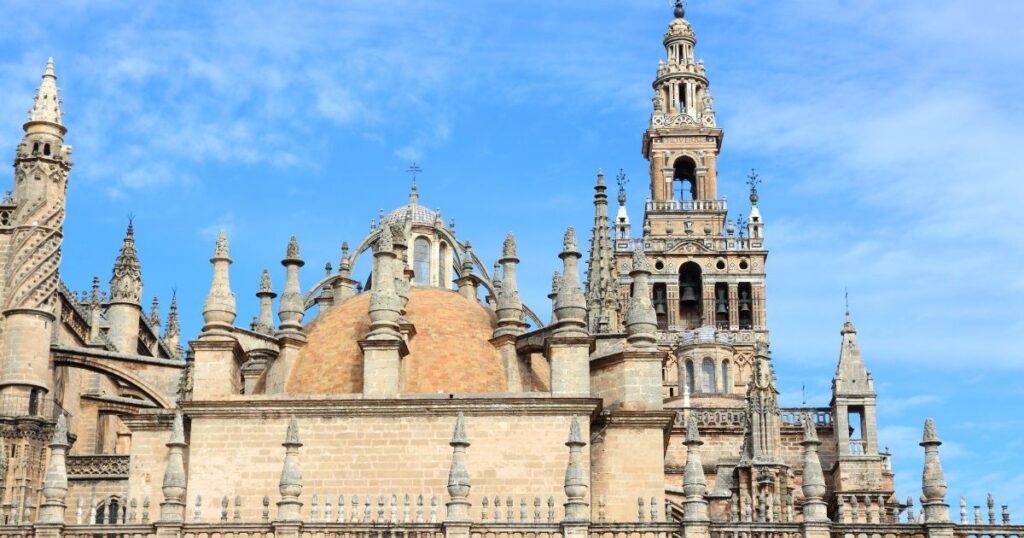
Seville Cathedral, the largest Gothic cathedral in the world, is a must-see. Inside, you’ll find the tomb of Christopher Columbus and an impressive collection of religious art. Don’t miss the climb up La Giralda, the cathedral’s bell tower, for stunning views of the city.
Alcázar of Seville
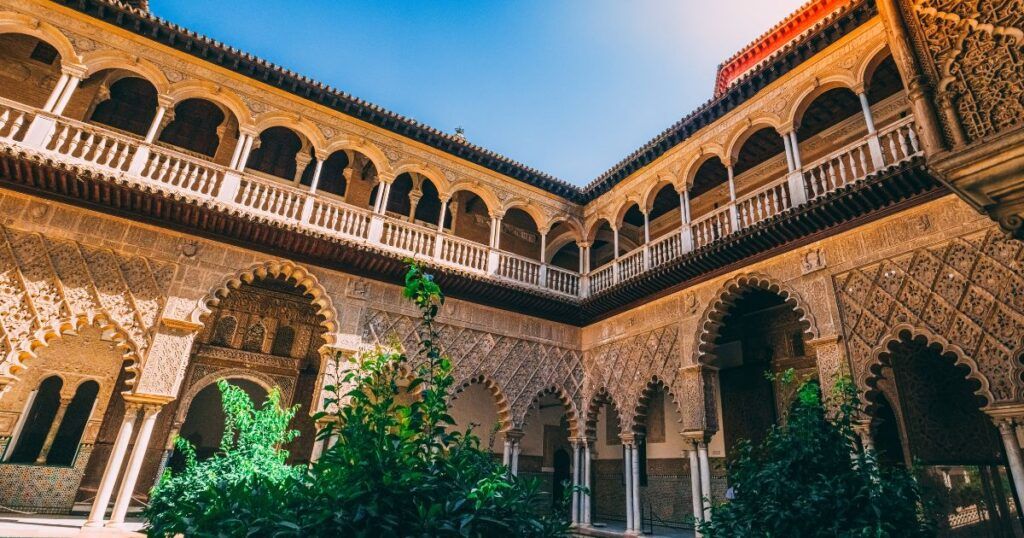
The Alcázar of Seville is a royal palace originally developed by Moorish Muslim kings. Its intricate Mudejar architecture, beautiful gardens, and historic significance make it a highlight of any visit to Seville.
Plaza de España
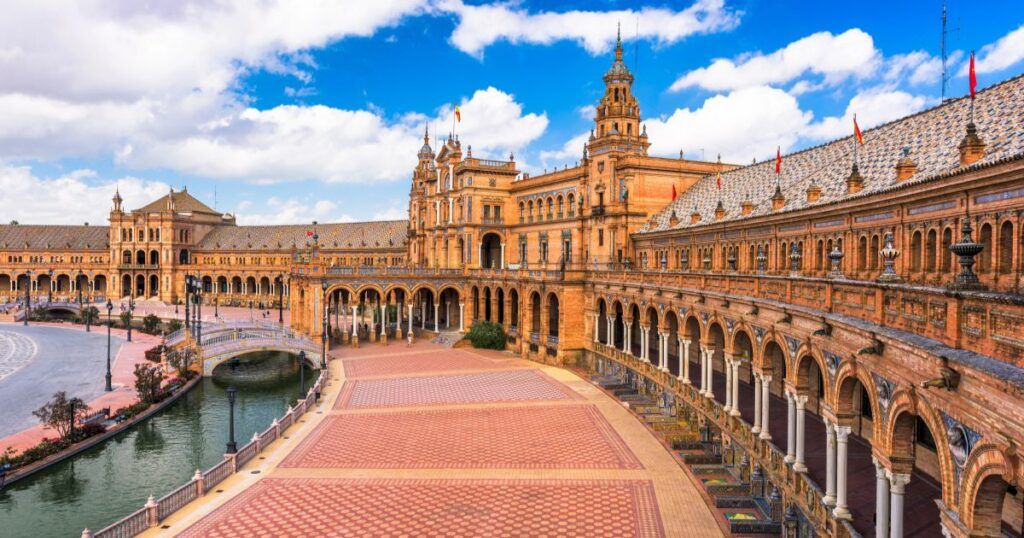
Plaza de España is a grandiose square built for the Ibero-American Exposition of 1929. It features a stunning blend of Renaissance and Moorish architectural styles, with a large fountain, bridges, and a canal that you can explore by boat.
La Giralda
La Giralda, the bell tower of Seville Cathedral, is an iconic symbol of the city. Originally built as a minaret for the Great Mosque of Seville in the 12th century, it was later converted into a bell tower after the Reconquista. Climbing to the top of La Giralda offers breathtaking panoramic views of Seville, showcasing its rich history and architectural beauty.
Torre del Oro
Torre del Oro, or the “Tower of Gold,” is a historic watchtower located on the banks of the Guadalquivir River. Built in the 13th century by the Almohad Caliphate, the tower was part of the city’s defensive fortifications. Today, it houses a maritime museum where visitors can learn about Seville’s naval history and enjoy stunning views of the river and city from the top.
Modern Attractions
Metropol Parasol
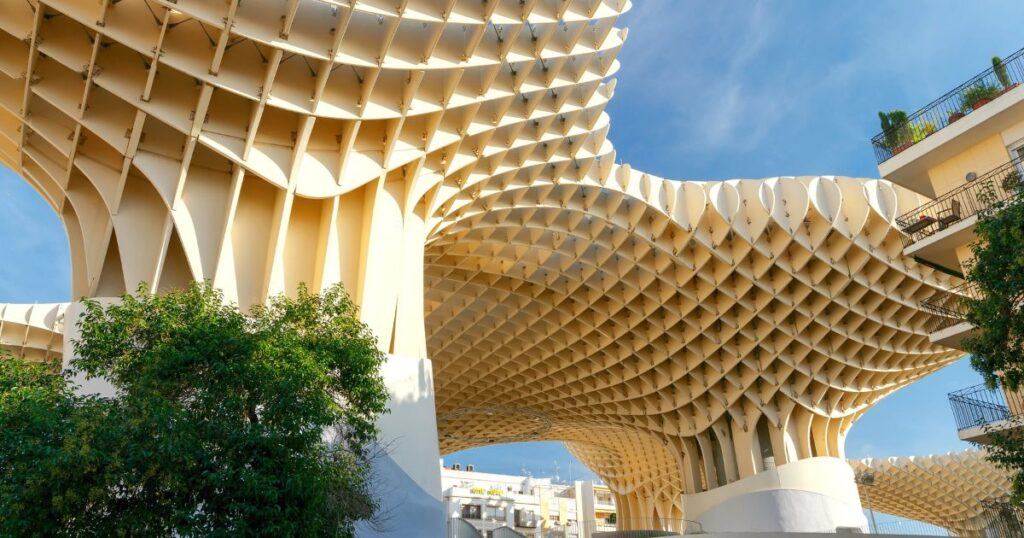
Known locally as “Las Setas” (The Mushrooms), Metropol Parasol is a striking wooden structure in La Encarnación square. It offers a panoramic viewpoint, an archaeological museum, and a lively market, making it a modern icon of the city.
Iconic Neighborhoods

Triana
Triana, across the river from the city center, is known for its vibrant flamenco culture and traditional ceramics. Wander through its lively streets, visit the Mercado de Triana, and enjoy the authentic local atmosphere.
Barrio Santa Cruz
Barrio Santa Cruz, the old Jewish quarter, is a maze of narrow streets, whitewashed houses, and beautiful squares. It’s one of Seville’s most picturesque neighborhoods, perfect for a leisurely stroll and discovering hidden gems.
Don’t Miss the Ultimate Spain Travel Guide
Parks and Gardens
Maria Luisa Park
Maria Luisa Park is Seville’s main green space, offering a lush escape from the city’s hustle and bustle. The park is home to beautiful fountains, monuments, and the stunning Plaza de América, making it ideal for a relaxing afternoon.
Cultural Experiences
Flamenco Shows
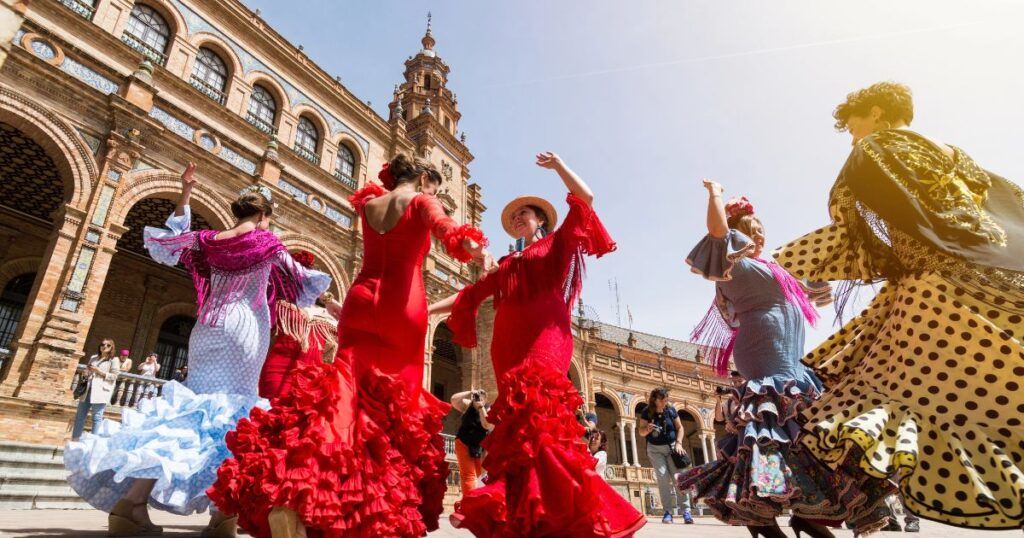
Seville is the heart of flamenco, and attending a performance is a must. Venues like El Palacio Andaluz and Casa de la Memoria offer authentic shows that capture the passion and intensity of this traditional Andalusian art form.
Museums and Art
Museum of Fine Arts
The Museum of Fine Arts of Seville houses an impressive collection of Spanish art, including works by Murillo, Zurbarán, and Goya. The museum is set in a former convent and offers a peaceful and enriching experience for art lovers.
Culinary Delights
Tapas Bars
Seville is renowned for its tapas culture. Hopping from bar to bar, sampling small dishes, is a quintessential Seville experience. Popular spots include El Rinconcillo, one of the oldest tapas bars in the city, and La Brunilda.
Festivals and Events
Feria de Abril
The Feria de Abril (April Fair) is Seville’s biggest festival, held two weeks after Easter. The city comes alive with flamenco dancing, traditional costumes, horse-drawn carriages, and lively casetas (tents) offering food and drink. It’s a vibrant celebration of Andalusian culture.
Day Trips
Seville’s location makes it an excellent base for exploring nearby attractions. Whether you’re interested in historic cities, picturesque towns, or natural beauty, there are plenty of options for enriching day trips. Here are a few top choices for day trips out ofSeville:
- Córdoba
- Ronda
- Jerez de la Frontera
- Cádiz
- Doñana National Park
Frequently Asked Questions About What To Do In Seville
How many days do you need in Seville?
Three days is ideal to experience the major sights at a relaxed pace. If you’re short on time, even two days will allow you to see the highlights.
Can you visit the Alcázar and the Cathedral in one day?
Yes, they are very near each other. But start early, book tickets ahead, and wear comfortable shoes! Both are large and worth lingering in.
What is the best time of year to visit Seville?
Spring (especially April) and fall offer the best weather. Summers are very hot, so plan accordingly. Winter months can be cooler but still delightful if you don’t like warm weather.
Conclusion – Is Seville Worth Visiting?
Absolutely. Seville is one of Spain’s most walkable, photogenic, and culturally rich cities. Whether you’re a first-time visitor or returning for more, these top things to do in Seville will give you a perfect mix of architecture, food, history, and local flavor.
And trust us – you’ll be dreaming of orange trees and flamenco long after you leave.
And remember, keep calm and roam on.
Other amazing cities in Spain that you might want to check out:
Europe Travel Planning Essentials
The short answer – YES! The long answer – YES! Travel insurance is not just for travel delays and cancellations. More importantly, it can cover medical emergencies. That’s super important because your own health insurance probably won’t cover you outside your home country.
Our go-to travel insurance provider – Travel Guard
Entry documentation varies depending on your citizenship and your length of stay. If you are visiting from the U.S., you will need a passport. Visas may be required if you are planning a stay of more than 90 days. Check here for your specific requirements.
If you’re booking hotels by the night rather than a package or a tour, our go-to hotel site is Booking.com.
If you want an apartment or hotel – VRBO.
Use Rail Europe for point-to-point rail tickets and multi-day rail passes.
Auto Europe is great for booking car rentals anywhere in Europe.
Try Skyscanner!


